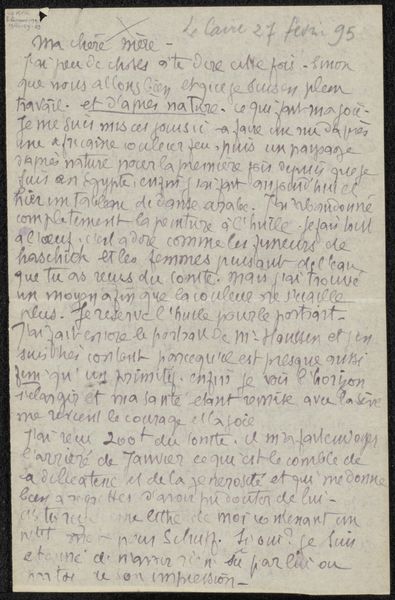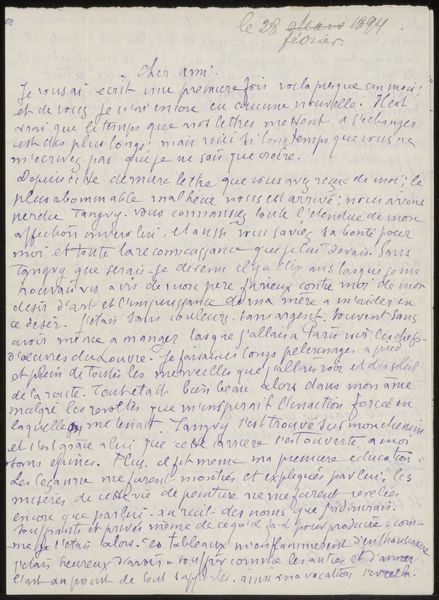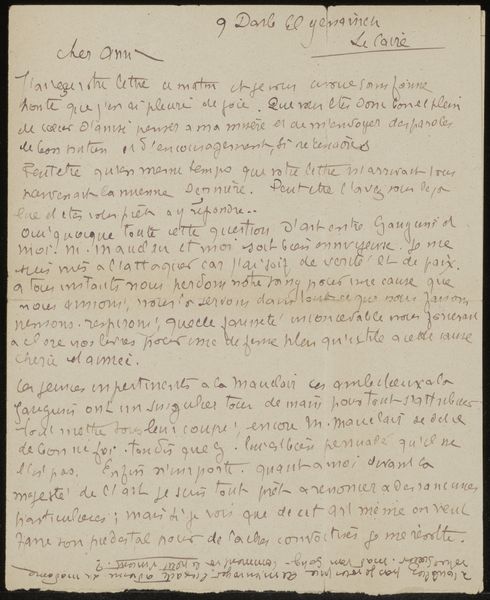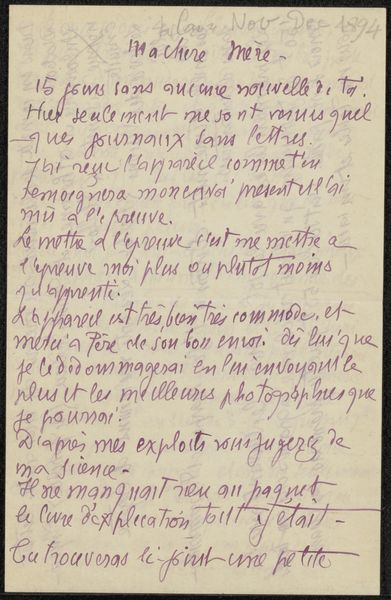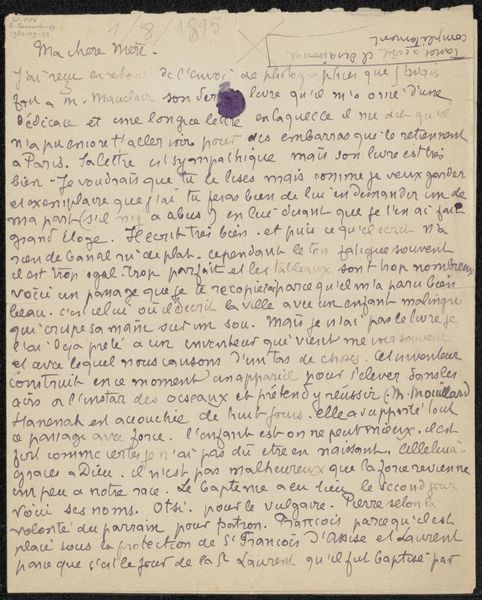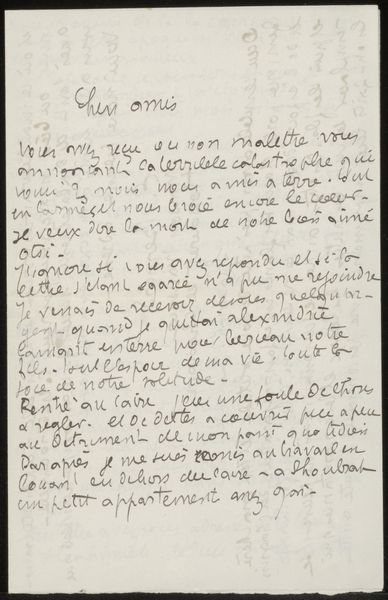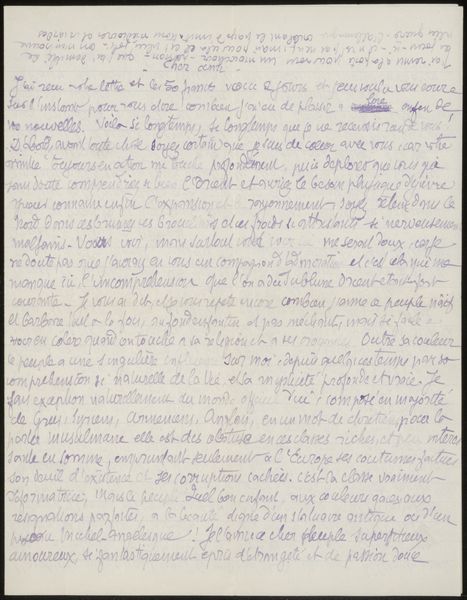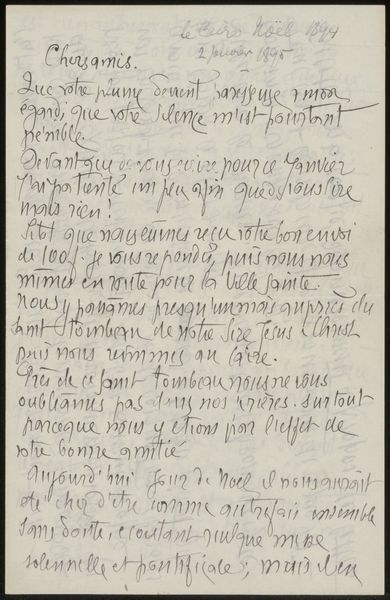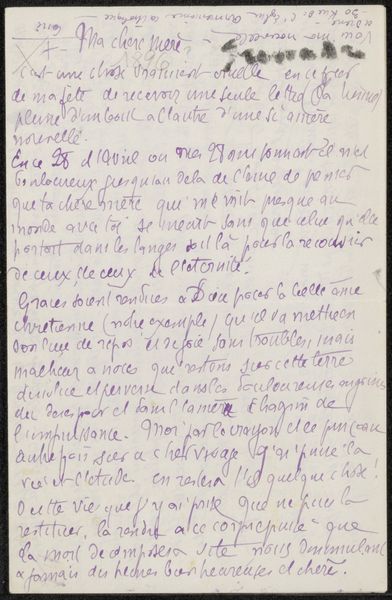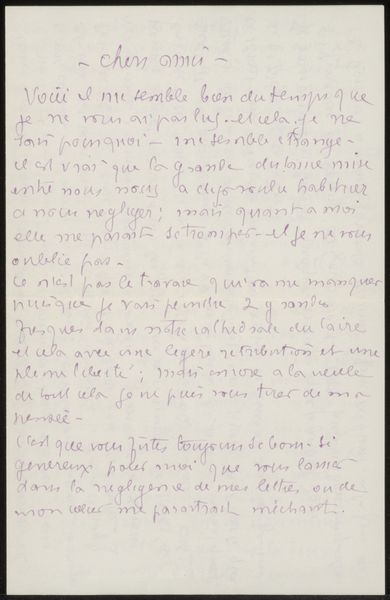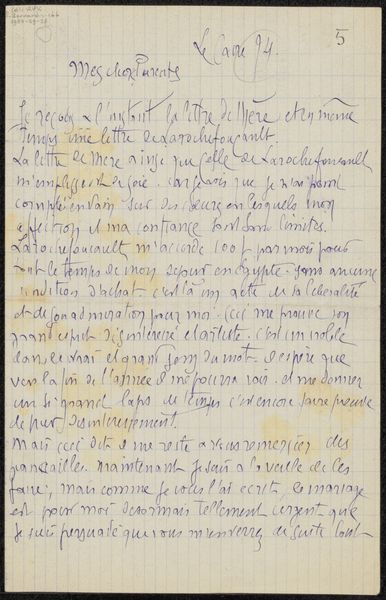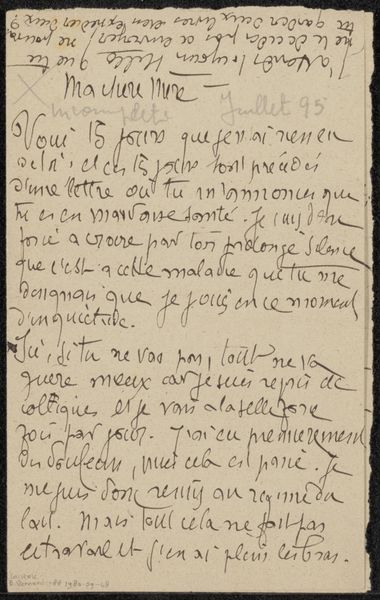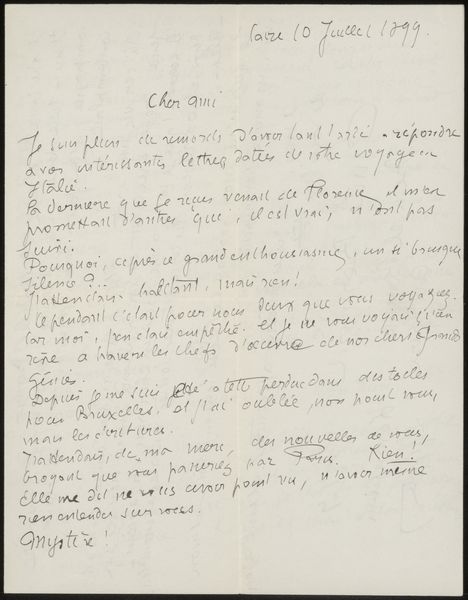
drawing, paper, photography, ink
#
drawing
#
paper
#
photography
#
personal sketchbook
#
ink
Copyright: Rijks Museum: Open Domain
Curator: We're looking at “Brief aan Andries Bonger,” a letter composed before 1895 by Émile Bernard. This delicate drawing incorporates ink on paper, preserving a piece of art history through photography. It's fascinating to witness the raw interaction between an artist and his materials in a pre-digital age. Editor: Yes, and even beyond that – look at this writing. It almost appears as an abstraction, a coded world to get lost in. So intense and personal. It reads like a diary entry. You sense intimacy, loneliness, artistic struggles, right? Curator: Absolutely, the handwritten nature emphasizes a certain type of physical production. Before mass printing, written communication possessed a distinct material value. Each word meticulously rendered by hand creates layers of social meaning about labor, literacy, and class that shaped the relationship between writer and receiver. Editor: I completely see what you’re saying but the personal is just jumping out here, you know? You feel the pressure on this person; the urgency and hope behind their artistic mission...It feels as if he's directly communicating a state of being to us, not just a dry report. Curator: Perhaps, but think about the paper itself. Where was it made? By whom? Who would be able to access something like that? Paper in the pre-digital world involved entire social, economic, and industrial systems that enabled people to send and record history, including letters like this. We can't abstract this. Editor: Fine! I won’t then! It's amazing to realize all that human labor comes down to the final product. The act of transferring a deeply personal thought onto material reality has been captured. Curator: Agreed. Seeing the evidence of craft underscores not only our role as interpreters of intent, but also as material witnesses. It shifts our gaze beyond just aesthetics toward acknowledging labor, tools, and production in culture-making processes that remain obscured from mainstream interpretations of art history today. Editor: So, while our connection starts at emotional immediacy, now we see this sketch carries with it the story of a particular time. An economy behind simple sharing, like here, in an old correspondence, or even a humble notebook... Amazing.
Comments
No comments
Be the first to comment and join the conversation on the ultimate creative platform.
